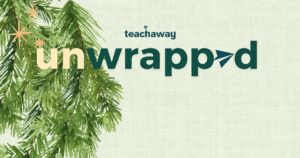Many of you have likely started your teach abroad placements and are still getting to know your classroom (or maybe even classrooms!) of students. Whether you’re an ESL teacher or a certified teacher in a public or international school, the better you know your students as individuals, the better placed you’ll be when it comes to addressing their learning needs on an individual basis.
The great thing is you can make getting to know your students a fun process by reserving a small amount of time at the beginning or end of a class every once in a while for a short game that’s both enjoyable and educational. So take some time to connect by trying one of these three activities!
Twenty questions
Not only is this a great opportunity to learn a little bit more about your students’ personal interests, it also gets them asking each other questions to problem solve.
To play this game, each person thinks of a person or an object, and their partner has to figure out which person or thing they have chosen using 20 questions that result in a yes or no answer. These questions could be anything from “Is this person male or female?” to “Is this person a musician?” This might also teach you a little more about cultural icons, depending on where you are teaching.
Would you rather…?
This activity is particularly good for getting to know your students better, because it asks them to identify their personal preferences.
Keep a list of questions for your students that start, “Would you rather…” Some examples include “Would you rather be able to fly or read minds?”, “Would you rather be famous or be the best friend of a famous person?”, “Would you rather have more time or more money?”
You can have your students participate in this activity in a number of ways: you can either have them move to one side of the room if they answer one way, the other side of the room if they answer the other way; you can ask students individually; or you can group students and ask them to come up with their own questions and then share them.
This game is also a good way to gather some feedback around classroom activity. For example, you could ask more learning-oriented questions and see what preferences your students have.
Q&A session
Sometimes just the open opportunity to ask questions can be fun and beneficial. Whenever you’re left with a few minutes at the end of a class, you can open the floor for them to ask you any questions that they’d like. You can either theme the questions (things we studied in class today, cultural questions, new vocabulary, or anything else you can think of), or you can let them ask whatever they’d like!
When this exercise is centered around classroom lessons and activity, it will benefit all students, even those that choose not to ask questions, because though only a few students may actually ask questions aloud, many will have similar questions. If you’re working in a country where students seem particularly discouraged from asking questions of you, you can try to overcome this by grouping students into smaller groups and asking them to come up with one question as a group to ask you all together. Then no one student is singled out.
Whatever activities you choose, make sure you remember to model for your students so that they can see what the game looks like—you’ll have a higher participation rate this way!



